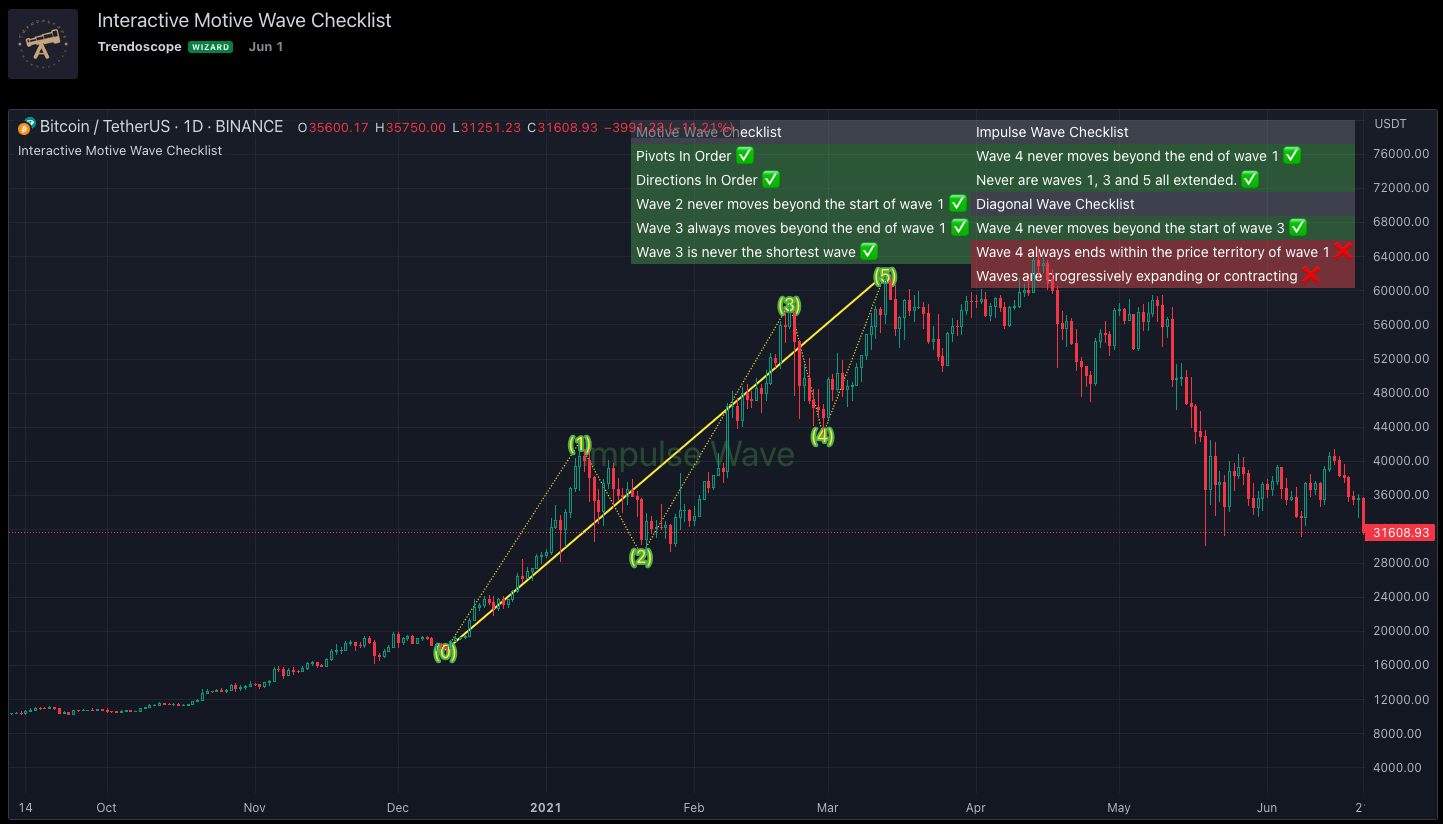Interactive Motive Wave Indicator

Here is an interactive tool that can be used for learning a bit about Elliott Waves. This is an interactive technical indicator that allows users to draw waves on the chart and helps scan through the rules of Motive Wave principles
Link to the Indicator: Interactive Motive Wave Indicator
Interactive Motive Wave Implementation
The script upon load asks users to enter 6 pivots in an order. Once all 6 pivots are selected on the interactive chart, the script will calculate if the structure is a valid motive wave.
When you load the script, you will see a prompt on the chart to select points on the chart to form 6 pivots.
When you select the 6 pivots, the checklists are populated on the chart to notify users which conditions for qualifying the selection have passed and which of them failed.
Conditions for Motive Wave
Motive waves can be either Impulse or Diagonal Waves. Diagonal waves can be either expanding or contracting diagonals. To learn more about diagonal waves, please go through this article - Decoding Wedge Patterns.
Rules for generic motive waves are as below
- Pivots in order - Checks whether the pivots selected are in progressive order.
- Directions in order - Checks if the pivot directions are correct - either PH, PL, PH, PL, PH, PL or PL, PH, PL, PH, PL, PH
- Wave 2 never moves beyond the start of wave 1 - Wave 2 retracement is less than 100% of wave1
- Wave 3 always moves beyond the end of wave 1 - Wave 3 retracement is more than 100% of wave2
- Wave 3 is never the shortest one - Check if Wave 3 is bigger than either Wave 1 wave 5 or both.
Rules for Impulse Waves
- Wave 4 never moves beyond the end of Wave 1 - meaning Wave 1 and Wave 4 never overlap on the price scale.
- Wave 1, 3, and 5 are all not extended. We check for retracement ratios of more than 200% to be considered extended waves.
Here is an example of impulse wave projection
Rules for Diagonal Waves
- Wave4 never moves beyond the start of Wave 3 - Wave 4 retracement is less than 100%
- Wave 4 always ends within the price territory of Wave 1 - Unlike impulse wave, wave 4 intersects with wave 1 in case of diagonal waves. This is the major difference between impulse and diagonal waves.
- Waves are progressively expanding or contracting - Wave1 > Wave3 > Wave5 and Wave2 > Wave4 to be contracting diagonal. Wave1 < Wave3 < Wave5 and Wave2 < Wave4 to be expanding diagonal waves.
Here is an example of Diagonal Wave Projection

Comments